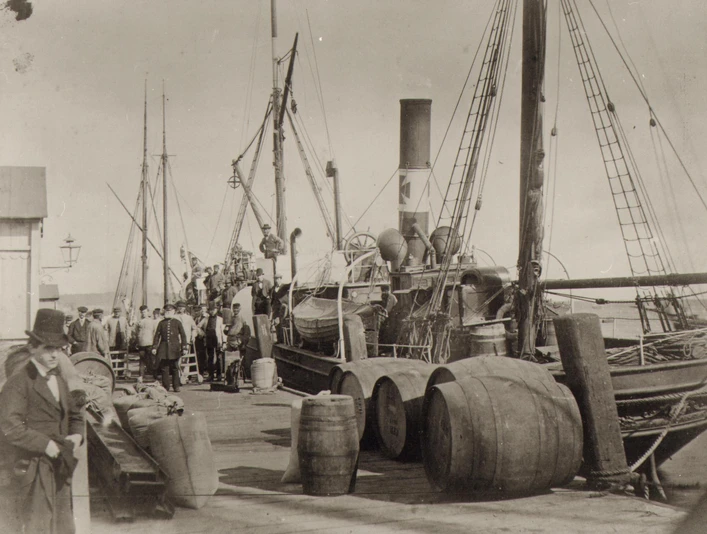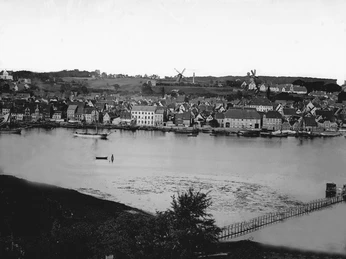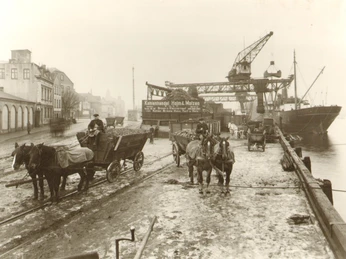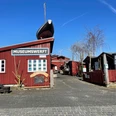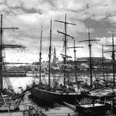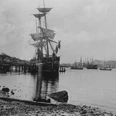For centuries, facilities for shipping and shipbuilding crowded the ship-bridge (Schiffbrücke). In addition, there were the devices for repairs that belonged to the skippers' guild (Schiffergelag). On the initiative of this skippers' guild, a wooden crane was erected in 1726, which was renewed several times, but finally demolished in 1889. You will find a reconstruction of this crane towering over the pier, thanks to the Museumshafen Flensburg e.V., which has been commemorating small-scale and coastal shipping on the Baltic Sea by preserving sailing ships since 1979.
Originally, the berths of the coastal sailing ships were located at the southern end of the ship-bridge. They mainly brought agricultural products from the surrounding countryside to the city. In the course of the 19th century, a harbour and bridge ordinance ensured that the charging and discharging berths were used appropriately, which also took into account the emerging steamship traffic. They also decided on a first steamship-bridge around 1840 at the height of Norderfischerstraße.
It was not only technical progress that caused drastic changes in the port's utilisation plans. More serious were the political consequences of the Danish-German war in 1864 and the subsequent incorporation of Schleswig-Holstein as a Prussian province into the German Empire. An economic reorientation pursued a southward network, as the Danish sales markets had been lost.
The increased expansion of the railway network, with a connection to Hamburg, came at the expense of direct overseas trade. The outdated fleet of sailing ships was replaced by steamships.
At the dockyard „Flensburger Schiffsbau-Gesellschaft“, founded in 1872, around 300 ships were built by 1910, including only 12 iron square riggers. Among the clients were many new Flensburg shipping companies, such as the steamboat association „Flensburger Dampfschifffahrts-Gesellschaft“ of 1869. Their steamships made cargo voyages to the North and Baltic Seas. They landed coal from England, timber from Sweden and Finland, and grain from Russia. This shipping company even participated in Chinese coastal shipping and assigned ships in transatlantic voyages to the South and North Americas.
Even before World War 1, Flensburg's steamship fleet outstripped the ports of Stettin and Rostock and took third place behind Hamburg and Bremen.
Good to know
Openings
Nearby
